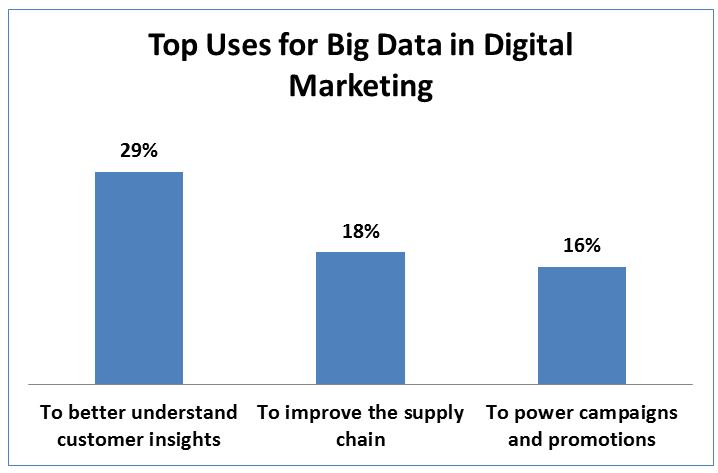Big Data is fast becoming the most talked about type of data solution in the world of digital marketing. When it comes to Big Data and understanding the implications that the usage of Big Data will have on any given digital industry, there are quite a few aspects to consider.
It can clearly be seen: when a solid understanding of Big Data and how it works is incorporated into a working digital marketing strategy, it can (and really does) influence the behavior and purchasing decisions of the customers in question.
So, now you’re sitting there wondering: what is Big Data? Our initial response to you would be to pose a question right back at you: where in the world have you been if Big Data is a concept that is foreign to you? Of late, all digital marketers have been throwing around the term ’Big Data’ and pondering the effects the analysis of each consumer’s behavior may have in the long term for their marketing campaign strategies.
What is it?
Basically, Big Data refers to any large and complex set of data – most often taking the form of a database – that is unable to be effectively analyzed or processed by traditional and conventional means, like perhaps an Excel document. Big Data requires unique algorithms and applications whereby, when applied correctly, they hold immense potential for honing in on insights, and organizing and curating different types of information, often from different sources.
In order to effectively analyze and utilize Big Data information, marketers will need to first of all understand their customers’ personas. Once the customer persona has been determined, it will then be up to the digital marketer to be able to figure out how to navigate around the various aspects as presented by taking a closer look at exactly what criteria will fall under each customer persona.
Examples of what to look out for, in terms of the customer persona demographics, are as follows:
-
Marital status
-
Socio-economic status
-
Employment status
-
Literacy status
-
Age
-
Ethnicity
-
Gender
By utilizing Big Data solutions, a variety of alternative consumer information is gathered, which is inevitably used to further classify consumers while attempting to influence their purchasing decisions.
The following non-identifiers are taken into account which, when collated, do indeed assist marketers in getting to know their customers on a deeper level.
-
Geographic location
-
Lifestyle orientations and choices
-
Reasons for wanting to purchase on any given site
-
How the consumer looks for the products they are wanting to purchase
-
What avenues are utilised to find what they seek?
-
Past behaviors, as determined by the various Big Data analysis tools (for example, google analytics)
There are many other non-identifiers that marketers can look to as a means to gather more information about their customer. What remains important is that Big Data is now able to effectively collate information about and around any given consumer, making it easy for marketers to target their audience, and optimize the marketing streams pointing toward any given consumer at any given time.
Let us take a look at a pseudo case study of how Big Data would affect a consumer’s decisions when it comes to purchasing a given commodity.
Our example takes a look at a typical online casino player who has decided to join the player community of a reputable online gambling site. A top online casino brand like PartyCasino may employ the services of Big Data by utilizing tools such as Google Analytics as a means to determine what the player journey may entail for its new players.
Big data will take into consideration a combination of these aspects, namely:
-
what OS is being used by the consumer?
-
what are the various mobile or desktop devices used to access the online gaming site?
-
where is the geolocation as captured by the IP address of the consumer?
-
what were the previous search results as captured by the search engine used by the consumer?
-
what was the most clicked on webpage per consumer?
The above 5 examples are just a few great ways of effectively making use of Big Data to optimize the players’ experience online. This data can then be analyzed by a marketer who will continue to interpret the data, to inevitably put together great promotional deals and offers that will appeal to new players, ensuring that the player remains loyal to the brand and keeps coming back for more gameplay moments. By offering the consumer what they are actually looking for the player is engaged appropriately, and all their gameplay consumer needs met.

You can clearly see that by employing Big Data solutions in an appropriate manner, consumers will be given exclusive and, sometimes, player-specific offers that will be guaranteed to appeal to their consumer sensibilities.



